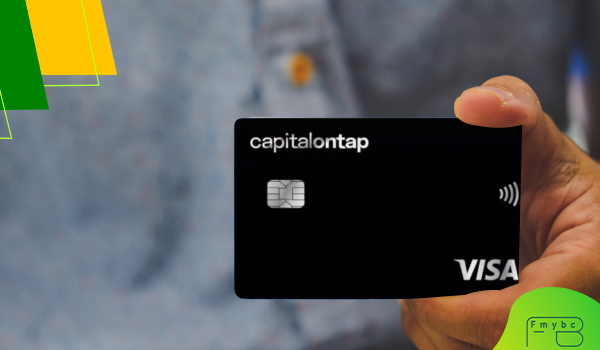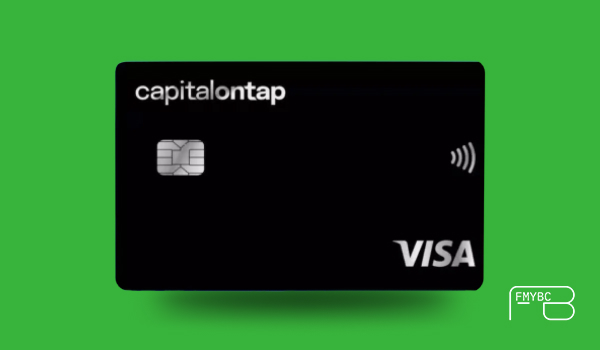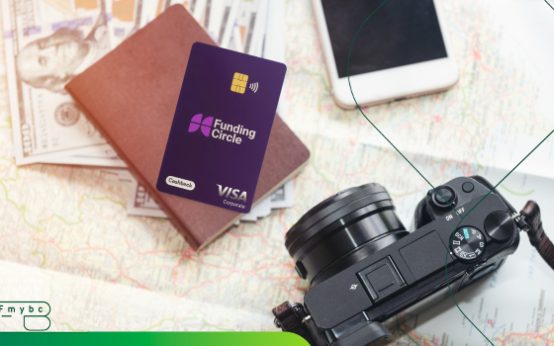
While the Capital on Tap Business Credit Card UK is already well known for its 1% cashback and Avios conversion, many business owners underestimate the strategic ways this card can be used to optimise cash flow, reduce operational costs, and unlock travel perks usually reserved for larger corporations.
Step-by-Step Guide to Getting Started
1. Application Process
- Complete an online application in under 10 minutes.
- Provide company details, director information, and estimated turnover.
- Many businesses receive instant approval, while others may require additional documentation such as recent bank statements.
2. Credit Assessment
Capital on Tap uses a soft search first, meaning your credit score is not affected if you are declined. Once approved, the business is assigned a credit limit up to £250,000, depending on turnover and financial history.
3. Card Issuance
- Virtual card available immediately in the app.
- Physical card arrives within 3–4 business days.
- Unlimited employee cards can be created at no extra cost, each with customised spending limits.
4. Integration with Accounting
Capital on Tap connects seamlessly with Xero and QuickBooks, automatically categorising expenses. This reduces manual admin, improves reconciliation, and helps accountants access clean data for tax returns.
Hacks to Maximise Value
1. Convert Cashback into Avios at Scale
A company spending £20,000 per month would generate 240,000 Avios annually, enough for multiple long-haul return flights. For directors who travel frequently, this benefit alone can outweigh the £299 Pro plan fee.
2. Use for Digital Advertising Spend
Many agencies and e-commerce firms allocate large budgets to Google Ads and Facebook Ads. Running these costs through Capital on Tap generates thousands in cashback while simultaneously managing liquidity.
3. Avoid FX Fees on Overseas Suppliers
By eliminating foreign exchange charges, businesses save an immediate 2.99%–3.5% compared with cards like Amex Business Gold or Barclaycard Business. For companies importing stock from Europe or Asia, this translates into thousands saved annually.
4. Build Employee Accountability
Issue employee cards with strict limits (£500, £2,000, etc.), ensuring no overspending while still collecting full cashback. All transactions feed into one dashboard, creating real-time expense visibility.
5. Rotate Rewards Strategically
Not all redemptions are equal. Avios for short-haul European flights often yield lower value compared to long-haul premium cabins. Businesses can multiply value by saving Avios for transatlantic or Asia flights, rather than cashing out early.

Frequently Asked Questions (Uncommon)
Will using multiple employee cards dilute cashback rewards?
No. Cashback and Avios are pooled at the company account level, regardless of how many cards are issued.
Can the card be used for HMRC tax payments?
Yes, many businesses successfully use Capital on Tap for VAT and Corporation Tax payments, generating cashback on obligations that normally don’t earn rewards.
Is the card suitable for startups with low turnover?
Yes, but credit limits will likely be smaller (e.g., £5,000–£15,000). Over time, as revenue increases, limits can scale significantly.
Does the card support international employees?
Currently, additional cards can only be issued to employees based in the UK, though spending abroad is fully supported with no FX fees.
Cost Optimisation and Real-World Scenarios
Scenario 1 – A Digital Marketing Agency
Annual spend: £300,000 on client ad campaigns.
- Cashback: £3,000.
- If converted to Avios: ~300,000 points (worth £2,500–£3,500 in flights).
- Outcome: Agency directors use points for international conferences, reducing travel budgets.
Scenario 2 – E-commerce Importer
Annual spend: £150,000 with overseas suppliers.
- Savings: £4,500 in avoided FX fees.
- Cashback: £1,500.
- Outcome: Business reinvests savings into inventory turnover.
Scenario 3 – Consultancy Firm with 10 Staff
- 10 employee cards issued, each with a £2,000 limit.
- All expenses funnelled into one dashboard, saving £5,000 annually in admin/accounting time.
- Cashback: £800 on £80,000 spend.
Alternatives to Consider
| Card / Feature | Capital on Tap Pro | Amex Business Gold | Barclaycard Business | Tide Expense Card |
| Annual Fee | £299 | £175 (1st yr free) | £0–£150 | £0 |
| Cashback / Rewards | 1% cashback / Avios | Membership Rewards | Limited cashback | None |
| Credit Limit Potential | Up to £250,000 | Lower, varies | Moderate | Prepaid only |
| Foreign Exchange Fees | None | 2.99% | 2.75% | N/A |
| Employee Cards | Unlimited free | Limited | Limited | Available |
| Premium Perks | Lounges, Radisson | Insurance, Amex Offers | Basic travel perks | Basic budgeting |
Capital on Tap positions itself between traditional credit card providers (like Barclays) and fintech expense tools (like Tide), offering a balance of credit access + rewards + fintech flexibility.
How to Maximise Value
- Choose the right plan: Free plan is excellent for SMEs with <£100k annual spend. The Pro plan becomes attractive above £200k, especially for Avios users.
- Centralise expenses: Push as many costs (ads, suppliers, subscriptions) through the card to maximise cashback.
- Leverage accounting integrations: Automate reconciliation to save time and reduce errors.
- Use Avios smartly: Prioritise redemptions for long-haul premium flights rather than short domestic hops.
- Monitor employee spend: Use card-level limits and alerts to prevent leakage.
Conclusion
The Capital on Tap Business Credit Card UK is more than a simple cashback card; it’s a financial management tool designed for modern SMEs. With unlimited cashback, high credit limits, and the ability to convert rewards into Avios, it caters to businesses balancing growth and efficiency. Compared with traditional providers, its no FX fees and seamless digital integrations give it a distinct edge.



 Fluid Credit Card Guide: Maximize Your Balance Transfer Strategy Without Paying Hidden Interest <p style='font-size:14px;'>A step-by-step guide to using the Fluid credit card wisely — and avoiding the common mistakes many UK borrowers make.</p>
Fluid Credit Card Guide: Maximize Your Balance Transfer Strategy Without Paying Hidden Interest <p style='font-size:14px;'>A step-by-step guide to using the Fluid credit card wisely — and avoiding the common mistakes many UK borrowers make.</p>  How to Get the Most Out of the Santander Edge Credit Card <p style='font-size:14px;'>A hands-on guide to maximizing cashback, avoiding hidden costs and comparing smarter options in the UK market.</p>
How to Get the Most Out of the Santander Edge Credit Card <p style='font-size:14px;'>A hands-on guide to maximizing cashback, avoiding hidden costs and comparing smarter options in the UK market.</p>  Advanced Guide to Getting the Most Out of the Funding Circle Business Cashback Card <p style='font-size:14px;'>How to turn a simple business credit card into a smarter cash-flow tool with rewards that support long-term growth</p>
Advanced Guide to Getting the Most Out of the Funding Circle Business Cashback Card <p style='font-size:14px;'>How to turn a simple business credit card into a smarter cash-flow tool with rewards that support long-term growth</p>